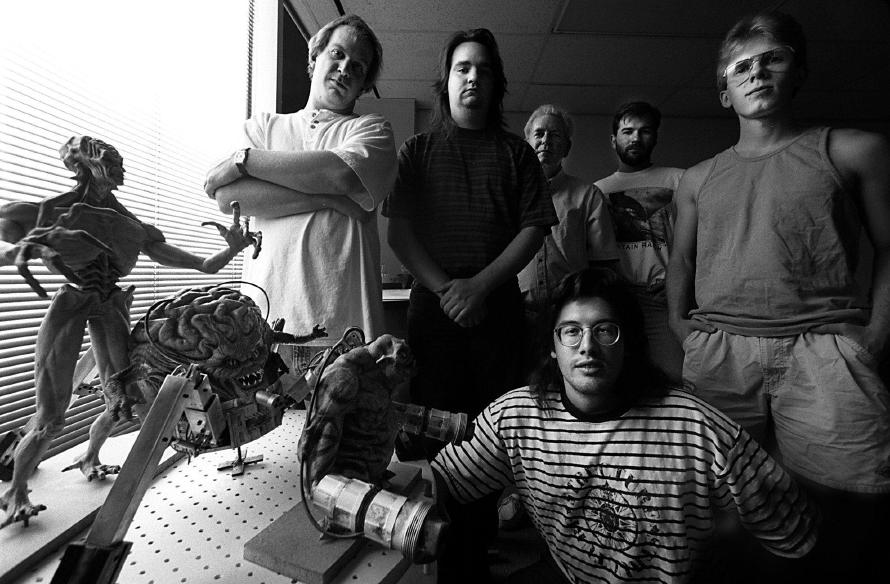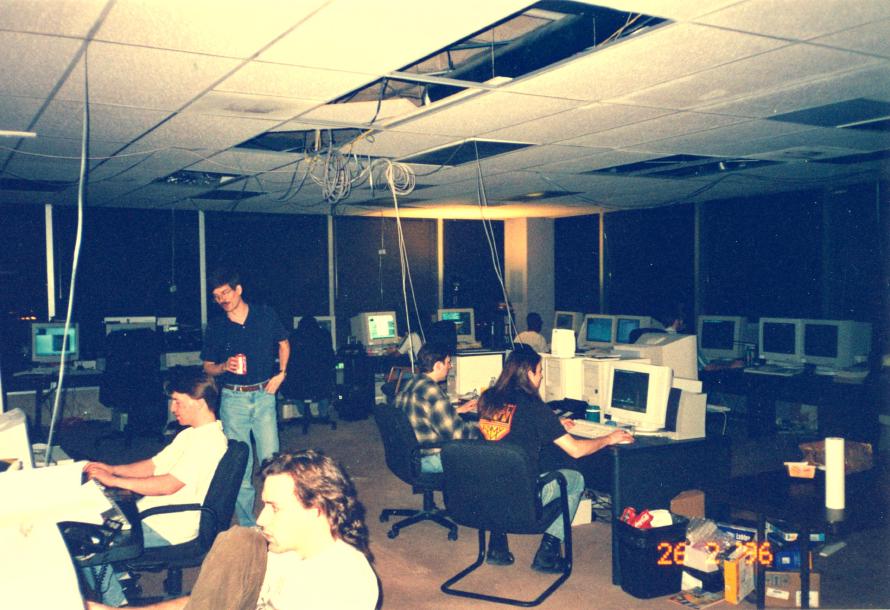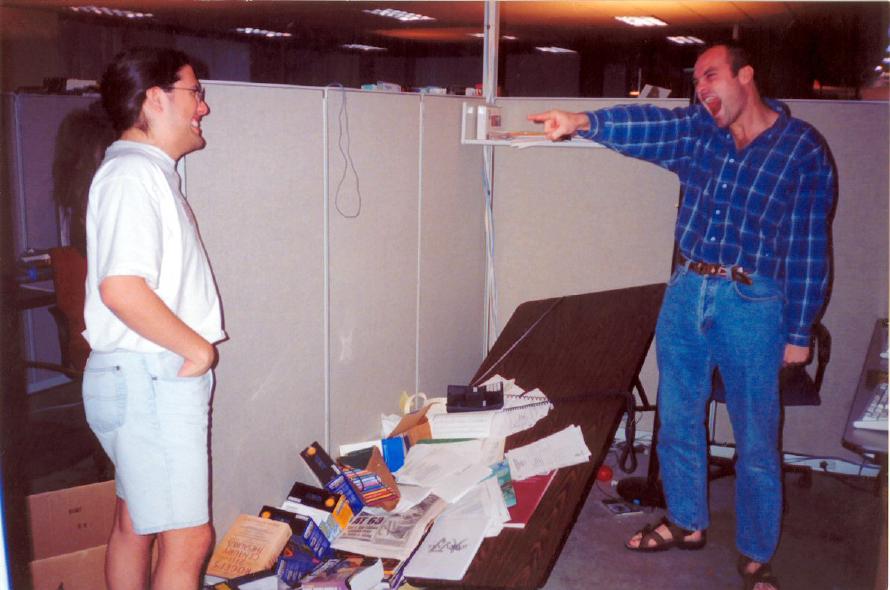Masters of Doom
Both grew up in the 1970s, experiencing the golden age of arcade video games. Classic games like Space Invaders and Pac-Man was an important part of their childhoods. The Apple II was the inaugural home computer for both Carmack and Romero, and the first published games for both of them were Apple II titles.
The two Johns’ paths eventually crossed when they met at Softdisk in 1989. It was a match made in heaven, and both were integral to the company’s success with their contributions to the Big Blue Disk magazine. Carmack, a programming and computer graphics genius - described as “a brain on legs” - and Romero, brilliant at both programming and game design.
At Softdisk, Romero and Carmack met Tom Hall and Adrian Carmack (not related to John). Tom worked at the company as a programmer and game designer, while Adrian’s primary role was as an artist. In early 1991, the four of them left Softdisk, and founded Id Software.
The First Years
The first game the quartet developed was Commander Keen in Invasion of the Vorticons. The game was released as shareware, and published by Apogee Software. The Commander Keen series pushed the boundaries of side-scrollers at the time, and was a financial success for id Software.
In May, 1992, the company released their break-out title, the grandfather of first-person shooters, Wolfenstein 3D. The game featured smooth 3D graphics like no other computer game, and many players found the violent gameplay engaging. Few people would have raised an eyebrow today, but back in 1992, Wolfenstein 3D was considered very controversial.

On a personal note, I remember going to my junior high computer lab during the weekends with my friends to play Wolfenstein 3D, and kill me some nazis. I’d somehow gotten my hands on keys to the school’s front door and computer lab1, and me and my fellow nerds frequently took advantage of that.
Wolfenstein 3D paved the way for id Software’s fame. After essentially founding an entire genre, they continued to up the ante with the Doom and Quake series of extremely successful first-person shooters.
Success and Hard Times
But id Software’s raging success took its toll, and the two John’s different personalities started to become a problem.
Romero and Carmack disagreed on the future direction of id Software. Romero wanted the game to follow his demanding vision without compromise. Carmack, on the other hand, insisted that the project had to make steady progress toward completion. He even accused Romero of not working as much as the other developers, and around the time Quake was released in 2006, Romero was forced to resign from the company.

John Romero went on to found Ion Storm together with his fellow Id Software colleague Tom Hall. With full creative freedom, Romero started working on the game that was soon advertised as his brainchild, Daikatana. Romero’s initial estimate was that the game should be ready for store shelves before Christmas 1997, but that never happened. After several years of technical difficulties and multiple delays, the game was finally released on April 21, 2000.
Daikatana was a disaster, selling only 8,190 copies in the United States by July 21. Romero has yet to see success on the level he had since he worked at id Software. His company, Romero Games Ltd., is currently working on Empire of Sin, a strategy game is set in the ruthless criminal underworld of 1920s Prohibition-era Chicago.
John Carmack, on the other hand, stayed with id Software after Romero’s exit. He worked on several of the companies success titles like Quake II, Quake III Arena, and Doom 3. In 2013, he resigned from id Software and started working for Oculus VR.
There’s a Book!
This post barely scratches the surface of the fascinating story of the two Johns and their rise to fame. If you want to know more about the tale of the two Johns, I strongly recommend you read Masters of Doom. The 2003 book by David Kushner tells the story of Romero, Carmack, id Software and their influence on popular culture.

Masters of Doom should is mandatory reading for every video game nerd. If you’re not much of a reader, it’s also available as an audio book. There’s also a television adaption of the book in the works, but only time will tell how that turns out. Many great books have been turned into terrible TV and movie adaptions.
And now I’m going to install and play a little Quake again.
I was a regular teachers pet, so I’m pretty sure there was no fishy business going on. ↩︎
Feedback
This post has no feedback yet.
Do you have any thoughts you want to share? A question, maybe? Or is something in this post just plainly wrong? Then please send an e-mail to vegard at vegard dot net with your input. You can also use any of the other points of contact listed on the About page.